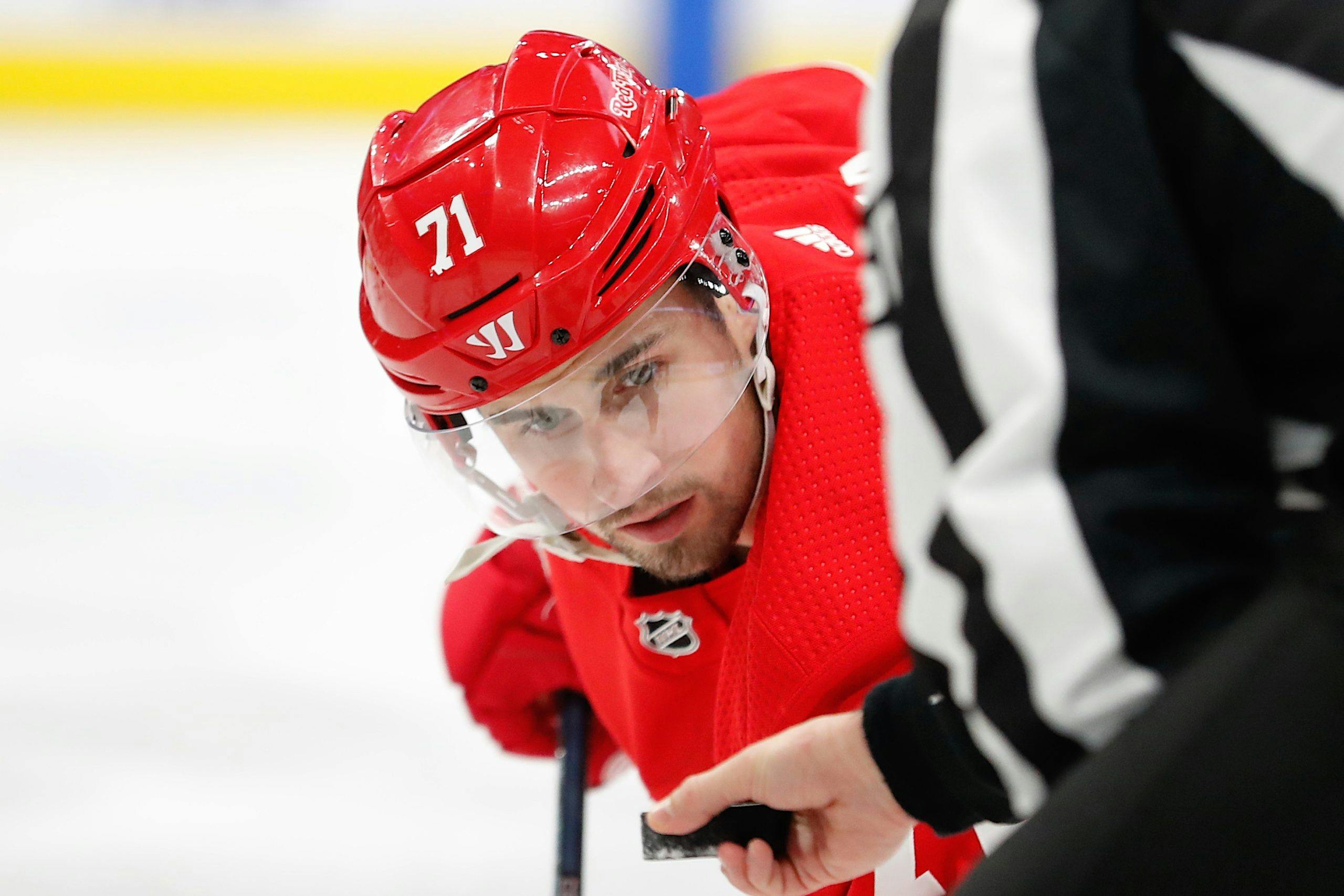Dylan Larkin’s biggest weakness from a year ago, penalties, is becoming a strength

By Cameron Kuom
4 years agoThrough all the hoopla surrounding the Red Wings historically bad play, no stone is going unturned. Detroit’s undisputed leader and top-line center, Dylan Larkin, is taking heat for a handful of uninspiring performances. Now, it would be ignorant to ignore some of his outings during this current 12 game losing streak. When the team has needed him to step up that hasn’t always been the case.

That isn’t to say he hasn’t been one of the Red Wings top players — far from it — but there is no denying he was much more consistent last season. In 2018-19, Larkin’s longest point drought only lasted 5 games. Compared to this season, he just recently snapped a 9 game scoring drought. Its December.
These stretches have led to a drop in production, falling from .961 points-per-game to .625 through 32 games this season.
But it wouldn’t be fair to not flip to the other side of the coin. This current iteration of the Red Wings have performed drastically worse on both ends of the ice. Combined with questionable powerplay usage (Larkin has primarily played in the slot or net-side this season), there isn’t much opportunity for touches, considering the Detroit man-advantage mainly flows though Dennis Cholowski and Anthony Mantha.
Take a closer look at the underlying numbers, and there is way more optimism that Larkin is playing at a similar level from a year ago. Luck and poor team play have played a role in the lower counting stats.
| 5-on-5 Statistics | 2019-20 | 2018-19 |
| xGF% | 55.57 | 50.22 |
| CF% | 51.7 | 53.3 |
| S% | 7.69 | 11.15 |
| G/60 | 0.71 | 1.16 |
| P/60 | 1.77 | 2.64 |
At 5-on-5, Larkin is generating scoring chances at a similar rate, and in the case of quality of chances (xGF%) he has actually improved by a decent margin. Yet, the actual goals and points are not as high. A large portion of his points-per-60 differential (-0.87) is the result of his goals-per-60 being down (-0.45). A near 4% drop in 5-on-5 shooting percentage will contribute to that.
However, if there is one area of Larkin’s game that is completely night and day better from last season, penalties taken has drastically improved for #71. Building up 73 PIMs through 76 games last season drew a lot of concern, and was firmly Larkin’s biggest weakness. Being a key piece at even strength and on the penalty kill made the penalty trouble even more detrimental.
That script has now flipped. Larkin has cleaned up his act, only being penalized for 7 two-minute-minors. That is significantly better from the 30 he took last season, considering rate of course. In fact, he has taken it a step further by becoming one of the top penalty-drawers in the league. He currently sits tied for first in the league in two-minute-minors drawn with 18. He currently has a plus-11 penalty differential, good enough to rank T-4 in the entire league. For comparison, he only drew 27 in 2018-19, which ranked T-21 in the league.
The unfortunate part in all of this is the Red Wings rank 5th last this season in powerplay percentage (14.8). So the value in the amount of penalties Larkin draws is not being capitalized on.
Nonetheless, it is still great to see the growth in Larkin’s game. Taking less penalties, specifically, speaks a lot to his maturity. As for the rest of his game? There isn’t much to worry about. The Red Wings still have a top-end young center to build around.
All advanced stats via Evolving Hockey
Recent articles from Cameron Kuom





